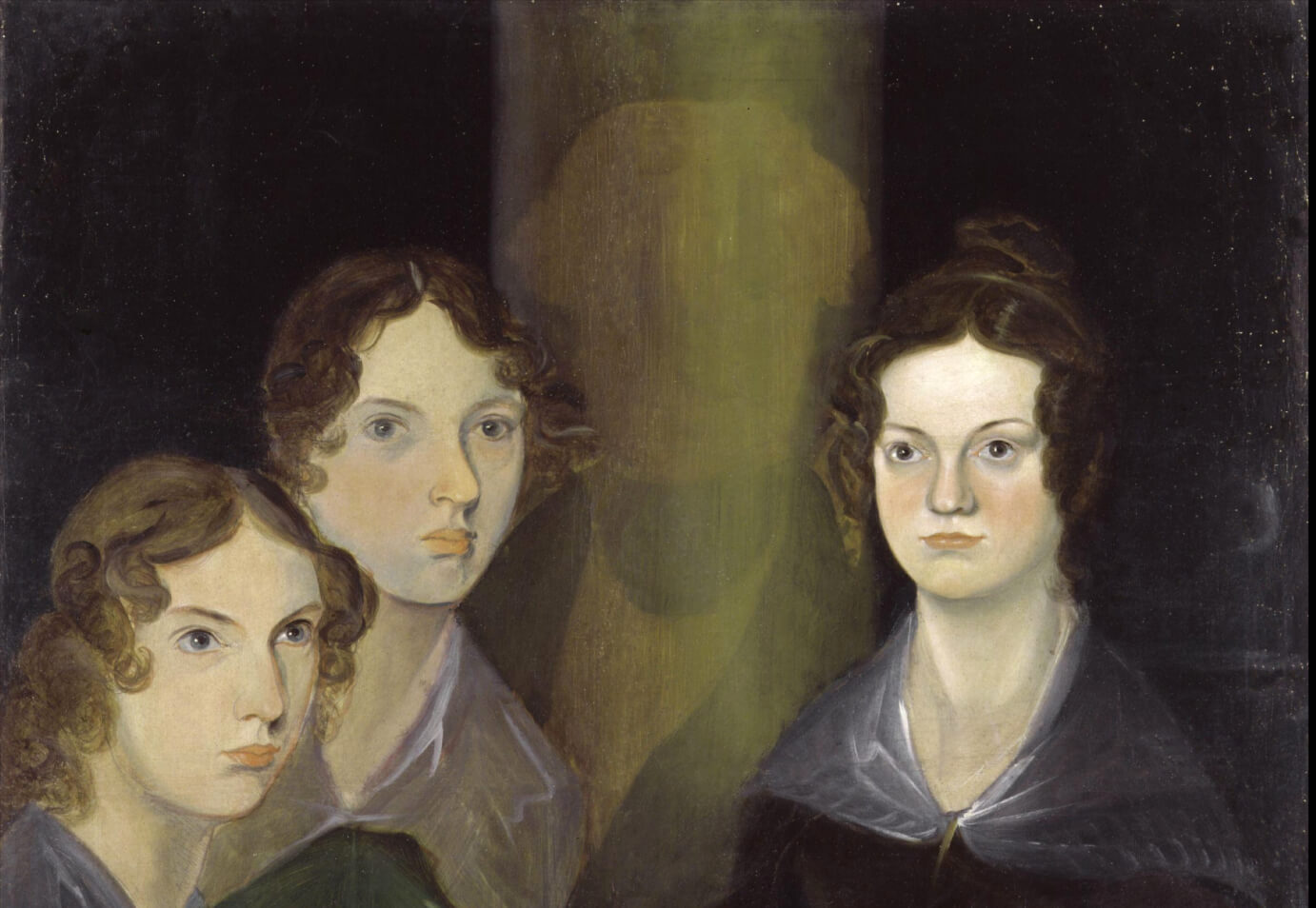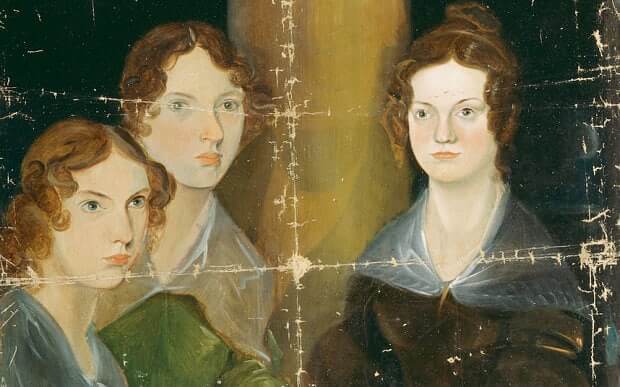Leap Year Facts, Traditions and Myths
We already know that leap year occurs every four years, but did you know that the year is full...

2017 marks the 170th anniversary of the publication of three novels by three obscure sisters from a little town beneath a windswept moor in Yorkshire… Three novels and three sisters that would go on to change the face of literature forever.
In 1847, the talented Charlotte, Emily and Anne Brontë, humbly educated daughters of a provincial parson, took the bold step to have their work published. This daring decision resulted in a global acclaim for the Brontës which has only grown over time.

©National Gallery
“I am no bird; and no net ensnares me: I am a free human being with an independent will”- Jane Eyre, Charlotte Brontë
During the 19th century, intellectual pursuits like writing were seen by society as rather unbefitting of a “proper” woman – instead, she ought to be more concerned with sewing, marrying, and quietly raising another generation of little males to maintain the patriarchal line.
For the Brontë Sisters, however, writing was a passion and provided a release from the mundanity of their daily lives in the village of Haworth, burdened by the self-destructive lifestyle of their younger brother, Branwell, as portrayed in the recent hit BBC biopic drama about the family, To Walk Invisible.
Under the male pseudonyms Currer, Ellis and Acton Bell, these strong women with their early feminist attitudes sent their first novels, Jane Eyre, Wuthering Heights and Agnes Grey, out into the world and the rest, as they say, is history.
The Parsonage, their former home in Haworth, is now a wonderful museum dedicated to the Brontës. Currently, it’s in the midst of an exciting five-year programme, BRONTË 200, celebrating the the bicentenaries of the births of each of the four siblings, as well as the 200th anniversary of their father’s arrival in the village to take up his role as parson.
2017 is a year that sees Branwell Brontë brought into the frame. This creative yet troubled youth was an artist in his own right, but he was also his own worst enemy; his attempts at becoming a painter and a poet were both thwarted by his idleness and growing reliance on alcohol and he would go on to drive himself to an early grave. As a result, he has always been overshadowed by the success of his talented sisters.
This latest exhibition, Mansions in the Sky, invites us to discover the true Branwell Brontë. Using illustrations, writings and personal possessions, his vibrant story is brought fascinatingly to life alongside installations curated by acclaimed poet Simon Armitage, who took his inspiration for the retrospective from a poem Branwell wrote and confidently sent to William Wordsworth and which is also on display.
The sisters loved to take long, bracing walks across the moors around Haworth and with such dramatic landscape to inspire them, it’s no wonder many local points of interests are reflected in their work.
We’ve brought you two fantastic Brontë walks to choose from: the first walk takes you to Brontë Waterfall and onwards up to Top Withens (a.k.a. the likely location of Wuthering Heights); the second leads up to the natural stone monolith of Ponden Kirk (a.k.a. Penistone crags).
For extra help finding the locations on these walks, as well as other fascinating places linked to Emily Brontë, take a look at the Google Map of Wuthering Heights locations, from The Readers’ Guide to Wuthering Heights.
Important note: the weather on the moors is incredibly changeable even in the nicest of weather, so it’s strongly advised you wear sensible clothing and footwear in addition to bringing along a compass and a map.

Image 1/image 3 via shutterstock, image 2 via Flickr
‘It was fine indeed; a perfect torrent racing over the rocks, white and beautiful!’ – Charlotte Brontë
The scenic tranquillity of South Deane Beck, now more popularly known as Brontë Waterfall, was much loved by the sisters. Ellen Nussey, Their life-long family friend, once described a trip here she took with Anne and Emily: “It was a small oasis of emerald green turf, broken here and there by small clear springs: a few large stones served as resting places; seated here, we were hidden from all the world, nothing appearing in view but miles and miles of heather, a glorious blue sky, and brightening sun.”
From the Brontë Parsonage, continue to the top of Church Lane and walk along the track running alongside a stone wall.
The track narrows into a worn, narrow footpath across fields. Keep following this for a few minutes, after which time it will start to descend towards a lane. Exit the footpath onto West Lane via the stile at the bottom of it, and turn left.
After a very short distance, the road forks. Take the left turning into the upward incline of Cemetery Road. You’ll be able to see Lower Laith Reservoir in the distance over to your right.
Continue along Cemetery Road until it comes to a junction after around half a mile, then cross over the road and carry straight on along the rough track, following the signpost that says “Footpath to Bronte Waterfalls 1½ miles”.
The rough track eventually becomes a footpath across the moorland and starts to descend towards the little valley of South Deane Beck, the location of the waterfall, which Anne and Emily referred to as ‘The Meeting of the Waters.’
Here, you’ll find a little stone clapper bridge crossing the beck and upstream to the left is the waterfall itself. However, unless there have been recent heavy rains, the “perfect torrent” described by Emily may be little more than a pretty trickle!
Dotted around near the bridge are the natural boulders, to which Ellen Nussey was no doubt referring. One of them happens to be shaped very much like a chair, giving rise to it being known as the Brontë Seat.
‘Pure, bracing ventilation they must have up there at all times, indeed: one may guess the power of the north wind blowing over the edge, by the excessive slant of a few stunted firs at the end of the house’ – Wuthering Heights
The now ruined Top Withens farmhouse is believed by many to have been Emily’s inspiration for the geographical situation of Wuthering Heights. Naturally, scores of Brontë fans flock to the windswept spot, each year.
The ruin can be reached from the above walk to Brontë Waterfall.
Cross the stone bridge and climb up the steps on the opposite bank. Ahead, there’s a signpost. Turn left at this, following the sign’s direction of “Top Withens 1 mile”.
You’ll shortly reach a stream. Cross this via the rough stepping stones and continue to follow the path, which here is laid with large stones.
Carry on until the path reaches a junction with another stone path. Here, follow the signpost left, in the direction of “Top Withens” and “Pennine Way”.
Ahead, you’ll see Top Withens.
This is a great spot for having a rest on the benches and taking in the excellent view. Be sure to look for the plaque in the wall, describing the site’s possible connection to Wuthering Heights.

Image 1 & 2 ©Tripadvisor; image 3 ©wuthering-heights.co.uk
‘The fairy cave under Penistone crags’; ‘I should delight to look round me from the brow of that tallest point’ – Wuthering Heights
The rocky outcrop of Ponden Kirk was almost certainly the inspiration behind Penistone crags, in Wuthering Heights. The ‘fairy cave’ described beneath it in the book matches the narrow stone gap that runs through the base of the actual kirk. Local legend has it that, if a woman were to crawl through this, she’d be married within the year.
In the car from Howarth, head a few minutes westwards to the village of Stanbury, then continue through this along Hob Lane until you reach Ponden Reservoir. There is space to park along the stretch of Ponden Lane.
Start the walk along Ponden Lane, sticking to the lane as it turns right at the sailing climb and begins to rise upward.
After a few moments, you’ll see the stone walls of Ponden Hall on your right. It’s believed that the house was the inspiration behind the description of Wuthering Heights itself, though the actual location better matches that of the fictional Thrushcroft Grange. As you turn the corner, look up at the side of the hall and you’ll see a very small paned window to the left. This is said by locals to be the window through which Cathy’s ghost famously tries to return, one stormy night, in the book.
Carry on along the lane, past the cottages on either side. From here, the tarmac ends and becomes a track. Continue along this a short distance, taking the first left turn.
This track leads past High Laithe Farm. At the end of it is a gate. Cross this via the stile and follow the track onwards.
Continue onwards past the wall on your right, then take a left up onto the narrow footpath on the moor when you reach a sign.
Carry on along this worn, narrow path, passing the various signs along the way, up the hill.
Make your way along the path (take care, as the path consists of loose shale in some areas). This path winds its way around the valley, on the other side of which you’ll be able to see the stone of Ponden Kirk jutting out.
Carry on, passing the stream and along the path upwards to the Kirk.
Be careful, as you approach the Kirk, as the path is uneven and narrow with a steep slope beneath it. From the Kirk, there are fantastic views over to Ponden Reservoir. Take care, if you choose to stand on the stone; with the steepness of the slope, it’s not advisable to climb down towards the ‘fairy cave’ through the rock, for safety reasons.
Why not take in the charm of the Brontë Sisters’ hometown along with the stunning moorlands surrounding it, with a stay at one of our Haworth cottages?
Are you on the phone to our call centre? Your Customer ID is:
Get involved in the Discussion